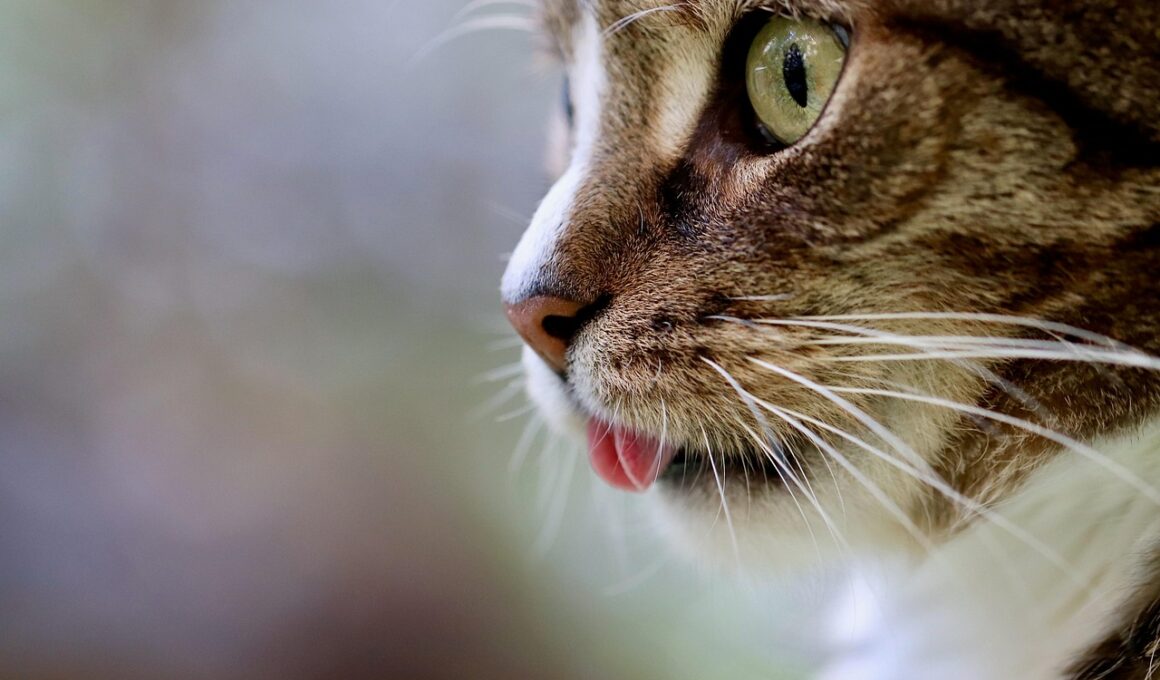Understanding the Cat Insurance Claims Process: A Step-by-Step Guide
Cat owners often find themselves navigating the cat insurance claims process at some point. Understanding it well is essential for ensuring you receive the coverage necessary for your furry friend’s health needs. This guide will take you through each step that is crucial in making the claims process as smooth as possible. Firstly, review your insurance policy to understand the specific coverages included. Check for any exclusions that may apply. Ensure you are familiar with your deductible amount and the policy limits. Having this information handy can save you a lot of time and frustration later. Secondly, always keep detailed records of your cat’s veterinary visits. This includes invoices, treatments administered, and any prescribed medications. Having organized paperwork helps streamline the claims process. Additionally, you should document any specific incidents that lead to a claim, such as accidents or illnesses. Every insurance provider may have unique requirements, so it is wise to consult with them for guidance throughout the process. Taking these initial steps can greatly alleviate stress when dealing with your cat’s health emergencies, ensuring that you can focus on their recovery.
Starting Your Claim
Once you have gathered all necessary documentation, the next step in the cat insurance claims process is to initiate the claim itself. Most insurance providers allow you to submit a claim either online or via traditional mail. It’s worth checking which method works best for you. Generally, online submissions are faster and may result in quicker processing times. When filling out the claim form, provide all requested information accurately. This includes the pet’s medical history, dates of treatment, and itemized bills from the veterinarian. It’s crucial to be thorough but concise in your responses. Additionally, attach any required documents to substantiate your claim, such as your cat’s medical records and receipts for treatments. Ensure that your documentation is clear and legible, as any ambiguity could lead to a denial or delay in processing your claim. After submitting, follow up with your insurance provider to confirm receipt of your claim. Ask how long processing typically takes and when you can expect an outcome. This proactive approach can help alleviate any worries regarding your claim’s status during what can be an anxious time for pet owners.
Once the claim is submitted, wait for the insurance company to review it. Generally, companies will assess the claim based on the provided documentation and their policy terms. This part of the process can take several days or even weeks to complete, depending on the complexity of the claim and the company’s workload. During this time, it’s advisable to remain patient and keep communication lines open with your insurance provider. If more information or additional documentation is required, they will contact you directly. Staying engaged can prevent unnecessary delays. Moreover, if your claim is denied, don’t be discouraged. Review the reasons for denial carefully; sometimes these can be resolved with the submission of more information or clarification. Reach out to your agent or customer service for guidance on how to proceed if your claim is denied. Oftentimes, clarification and honest communication can resolve misunderstandings. Understanding these steps in the review process helps set realistic expectations and reduces anxiety. It ensures you remain informed on how your claim is being handled.
Receiving Your Payout
After your claim has been approved, the next crucial step in the claims process is the payout. The insurance company will typically issue payment directly to your veterinarian or reimburse you, depending on your policy’s terms. Understanding your policy’s payout procedures can help manage your finances better during this period. If reimbursement is the route taken by your insurer, ensure that you provide your bank account details if requested. This will facilitate quicker transactions and reduce waiting time for funds. Note that the payout may not cover all incurred costs if you have met any deductibles or if there are limits on the policy coverage. Be prepared for the possibility that you may need to cover additional costs yourself, especially if your cat experiences ongoing health issues. After you receive your payout, keep all documentation regarding the process for future reference. This will help you in filing any future claims. Additionally, ensure you update your insurance provider with any changes in your cat’s health or treatment needs. Staying informed will guide you better in your future insurance dealings.
If you find yourself frequently needing to file claims, it may be beneficial to evaluate your current cat insurance policy. While many policies are good, not all are created equal when it comes to the claims process. Some insurers provide more customer-friendly procedures, quicker payouts, and comprehensive coverage. Be proactive in reviewing your policy annually or whenever a significant change in your cat’s health arises. In some cases, changing your insurance company can lead to better service and peace of mind, especially if claims become cumbersome with your current provider. When comparing policies, look for customer reviews that discuss the claims process and payout experiences. Asking fellow cat owners for their experiences can also provide insight into which companies are more reliable. Consider reaching out to a pet insurance broker who can help you analyze various options if you feel overwhelmed. They can pinpoint the best policy based on costs and your cat’s health needs. Staying proactive about your insurance will make a significant difference in managing your cat’s healthcare costs and ensures that you get the best coverage available.
Final Thoughts
In conclusion, navigating the cat insurance claims process can be daunting but is manageable with the right knowledge and preparation. Make sure to gather all necessary documentation before beginning the claims process. Proper record-keeping is crucial, so always retain essential invoices and medical records, as they will simplify claims. Initiate claims promptly through either online or mail submissions per your preference. Engage with your insurance provider often to stay updated on your claim status, especially during the review phase. Being informed allows for realistic expectations about outcomes. If claims become a frequent necessity, consider reprioritizing your policy. Understanding your coverage, limits, and potential out-of-pocket costs ensures you can make informed decisions for your pet’s health. Continual evaluation of your insurance can lead to a better experience in emergencies, highlighting the importance of proper research. Ultimately, securing the ideal cat insurance policy can save you time, stress, and financial burden when your beloved feline needs it most. Never hesitate to seek support or guidance throughout this process—your cat’s health and well-being depend on it.
In addition to understanding the cat insurance claims process, educating yourself about pet insurance in general is beneficial. Knowing what’s covered, excluded, and how the claims process works prepares you for potential health issues your cat may experience. Policy features like waiting periods, premium variations, and the claims process are essential details to grasp. By researching various providers, you can compare offerings and choose plans that suit your needs. Furthermore, staying updated on your pet’s health through routine vet visits contributes to early detection of health issues, potentially lessening the financial burden of treatment down the road. Speak with your veterinarian about the importance of insurance policies for future unexpected expenses. They can often recommend insurers or plans that align with the specific needs of your cat. Keeping your cat’s health at the forefront reduces anxiety and enhances your ability to make quick decisions when facing unexpected health changes. Ultimately, a well-informed pet owner is a key ally in navigating the complexities of pet care and insurance, ensuring your furry friend receives the best possible treatment when needed.


